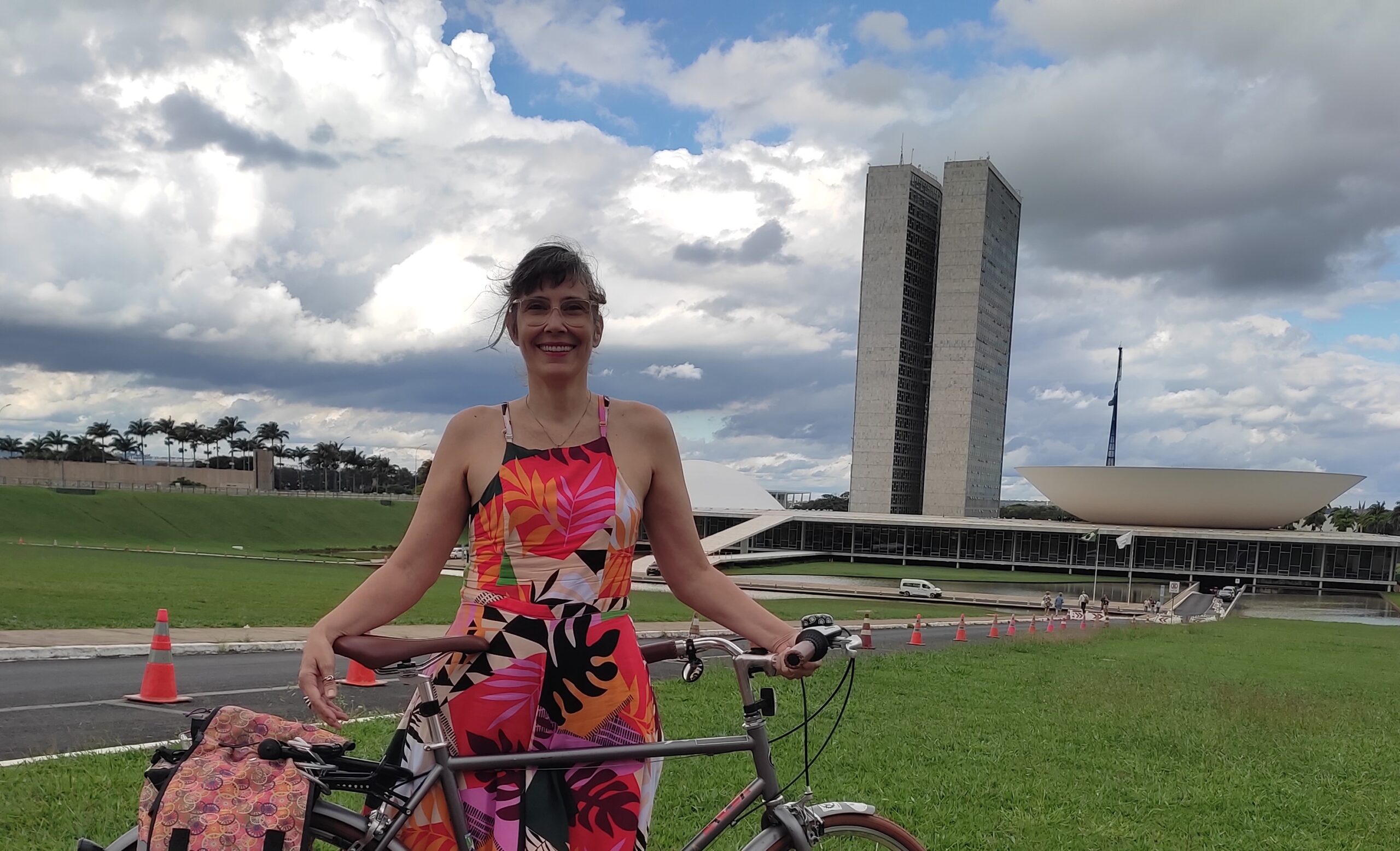Today I can say that I am first and foremost a cycling advocate. I have lived and worked in Brazil, the UK, and Uruguay, returning to Niterói, my hometown, in 2014 and moving to Brasília in 2021. The bicycle has been a means of transportation for me since my early teens. And, after coming back to Brazil, I have actively participated in cycling promotion, as I believe in the power of the bicycle as a tool to positively transform societies and cities, especially here. Currently, I am the Financial Director of the Brazilian Cyclists’ Union (UCB), Coordinator of the Safe Roads project, a member of the World Cycling Alliance’s Board, representing South America; and a member of Bike Anjo’s worldwide network. I was the BM for Niterói between September 2019 and May 2023, receiving the support of local stakeholders to become BM for Brasília – Brazil’s Capital.
How would you describe your mission?
To advocate for cycling and the bicycle in Brasília, changing the cultural mindset through participation in public hearings, activities, and events, having meetings with local authorities and agencies, and continuing to collaborate with “Rede Urbanidade” – a network of organizations that defend the rights of the most vulnerable.
What are the obstacles and challenges you’re facing in your city?
Brazil still maintains the tradition of privileging individual transportation over other means. Even though studies have shown that most urban journeys are completed on foot (36%), followed by public transport (30%) and bicycle (4%), pedestrians, cyclists, and public transportation only occupy 10% of urban space. Owning a motorized vehicle is a status symbol here and our increasing levels of motorization reflect that. Brasília has the highest rate of motorization in the country. Changing this scenario demands a change in mentality. I believe that with adequate infrastructure, permanent educational campaigns, and public policies that will improve conditions for cyclists, we can make a positive change.
What are your next steps now that you are the Bicycle Mayor?
Continue to work with local government, participating in meetings and events, advocating for the growth, improvement, and maintenance of our cycling infrastructure, and also for the development and implementation of educational campaigns and for a cohesive cycling strategy for the city. Advocate for speed reduction in urban areas, making our city safer for all. People should realize that cyclists can have a real positive impact on local emissions and that better health and less traffic benefit the entire community and society. Even if a person does not feel compelled to cycle, she/he should respect the choice and understand the benefits.
What can other cities learn from your city?
Brasília is the federal capital of Brazil and the seat of government of the Federal District. The city is located high in the Brazilian highlands in the country’s Central-West region. It is estimated to be Brazil’s third-most populous city. Among major Latin American cities, it has the highest GDP per capita. Brasília was a planned city developed by Lúcio Costa, Oscar Niemeyer, and Joaquim Cardozo in 1956 in a scheme to move the capital from Rio de Janeiro to a more central location. The landscape architect was Roberto Burle Marx. The city’s design divides it into numbered blocks as well as sectors for specified activities, such as the Hotel Sector, the Banking Sector, and the Embassy Sector. Brasília was included as a UNESCO World Heritage Site in 1987 due to its modernist architecture and uniquely artistic urban planning. It was named “City of Design” by UNESCO in October 2017 and has been part of the Creative Cities Network since then. The city has a unique status in Brazil, as it is an administrative division rather than a legal municipality like other cities in Brazil. Although Brasília is used as a synonym for the Federal District, the Federal District is composed of 33 administrative regions, only one of which is the area of the originally planned city, also called “Plano Piloto”. The rest of the Federal District is considered by the Brazilian Institute of Geography and Statistics to make up Brasília’s metropolitan area. Brasília was planned and built in the 1950s, the car industry was blooming in the country and every aspect of the district was focused on automobiles. In the 1990s there was a big media campaign for the increase in the number of pedestrian crossings, highlighting the need for campaigns to respect pedestrians. Although the Federal District has over 636km of cycling lanes, they are not interconnected. And, with a view to providing improvements to cyclists, the local government announced that a bidding notice will be published for 105 km of bike paths in various regions, with the main objective of interconnecting existing bike paths. More than cycling infrastructure, the biggest challenge in Brasília is speed, the capital is cut by highways with speeds of up to 80km/h. We have been working hard to change this scenario.
Connect
Join us

